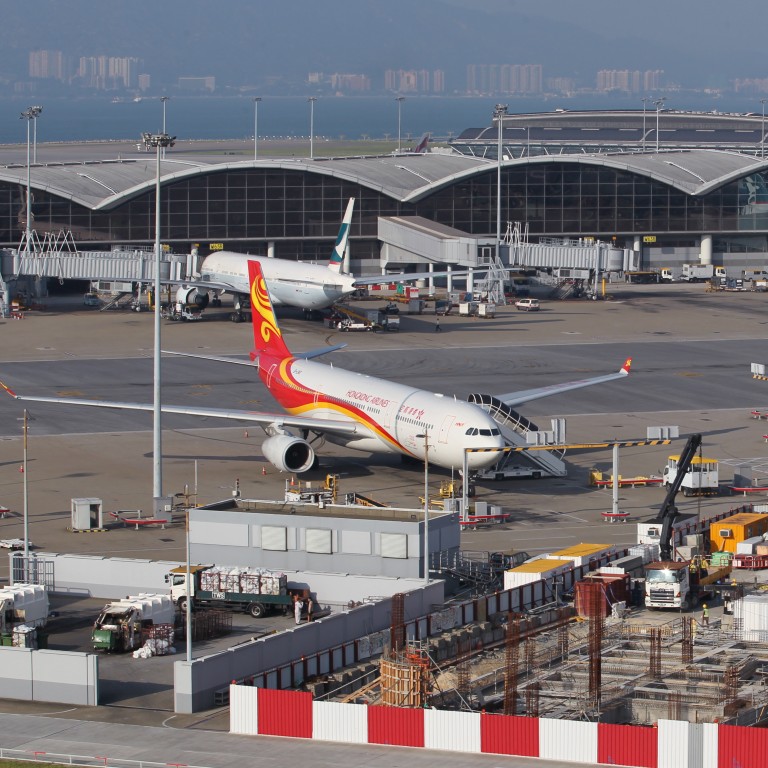
Cold comfort: Hong Kong airport's dated radar system needs air cons at low temperatures to run smoothly
Flight safety at Hong Kong airport is dependent on dated system that overheats and may even crash without warning, traffic controllers claim
The city's out-of-date air traffic control system is being propped up by air conditioners blasting cold air directly at machines that overheat easily as the aviation regulator attempts to avert breakdowns.
Air traffic controllers warn that they are sometimes navigating blind as the overheating system - used to direct planes and keep them at safe distances and altitudes - causes the consoles to crash.
The revelations come as the Civil Aviation Department draws heavy criticism against its oversight of a bungled upgrade of the system that is already three years behind schedule. Legislators have warned of flight risks.
Last week, Chief Secretary Carrie Lam Cheng Yuet-ngor pledged the upgraded system would not be launched until it was proven safe and reliable, after earlier testing showed a "catastrophic failure" in flight navigation.
Frontline staff members, speaking on condition of anonymity, described how screens in the current system would freeze, requiring a reboot that took up to 10 minutes. They also alleged the department had not trained controllers to deal with the situation, so they had to improvise - a claim denied by the authorities.
One air traffic controller said: "If you asked me about safety, if it's safe, I would say it is not, because to us every minute matters, every second matters.
"Sometimes, it takes only one or two minutes or 30 seconds to make a difference - to make aircraft safe or unsafe.
"If you allow me 30 seconds not to look at my flight radar console screen, that's OK. But when it freezes, the console doesn't tell you it freezes, so you still look at the screen and talk until you realise it's frozen and aircraft have stopped moving on the screen. And then you know it's crashed."
The controllers also said they had to wear winter clothes as a result of the drastic steps taken to keep the system running, including maintaining temperatures as low as 21 degrees Celsius.
"Once in a while … suddenly one console, two consoles stop working and we just have to reboot it. And the [department] says it is about an overheating problem," another controller said. "So they turn the air conditioning to a very cold state now, and they install individual extra air conditioning for computers behind the console, and they have done nothing on paper to make it safe or prove it's safe until we use the new system."
The department said it had "stepped up efforts to enhance maintenance measures" to stop screens "crashing". Those measures - including reducing the workload on machines - had led to "a prominent downward trend" in the number of problems, and now incidents had fallen within safety margins.
Alan Leong Kah-kit, a member of the Legislative Council's public accounts committee, which slammed the department over the upgrade, told the : "It shows the air traffic control system that is now being used by the department is not of the desired quality and standard.
"Although the so-called enhancement measure is a bit of a consolation, for an aviation hub as busy as Hong Kong, we really cannot afford anything less than 100 per cent."
The committee released a scathing report in June about the department and its director general, Norman Lo Shung-man, lambasting the regulator for paying for a new system that was late and over-budget at a time when costs were soaring in maintaining the current system.
Hong Kong International Airport's reputation was undermined last month when a marine accident caused the only road and rail link to the city to be severed.

